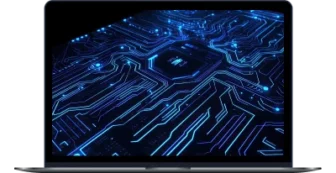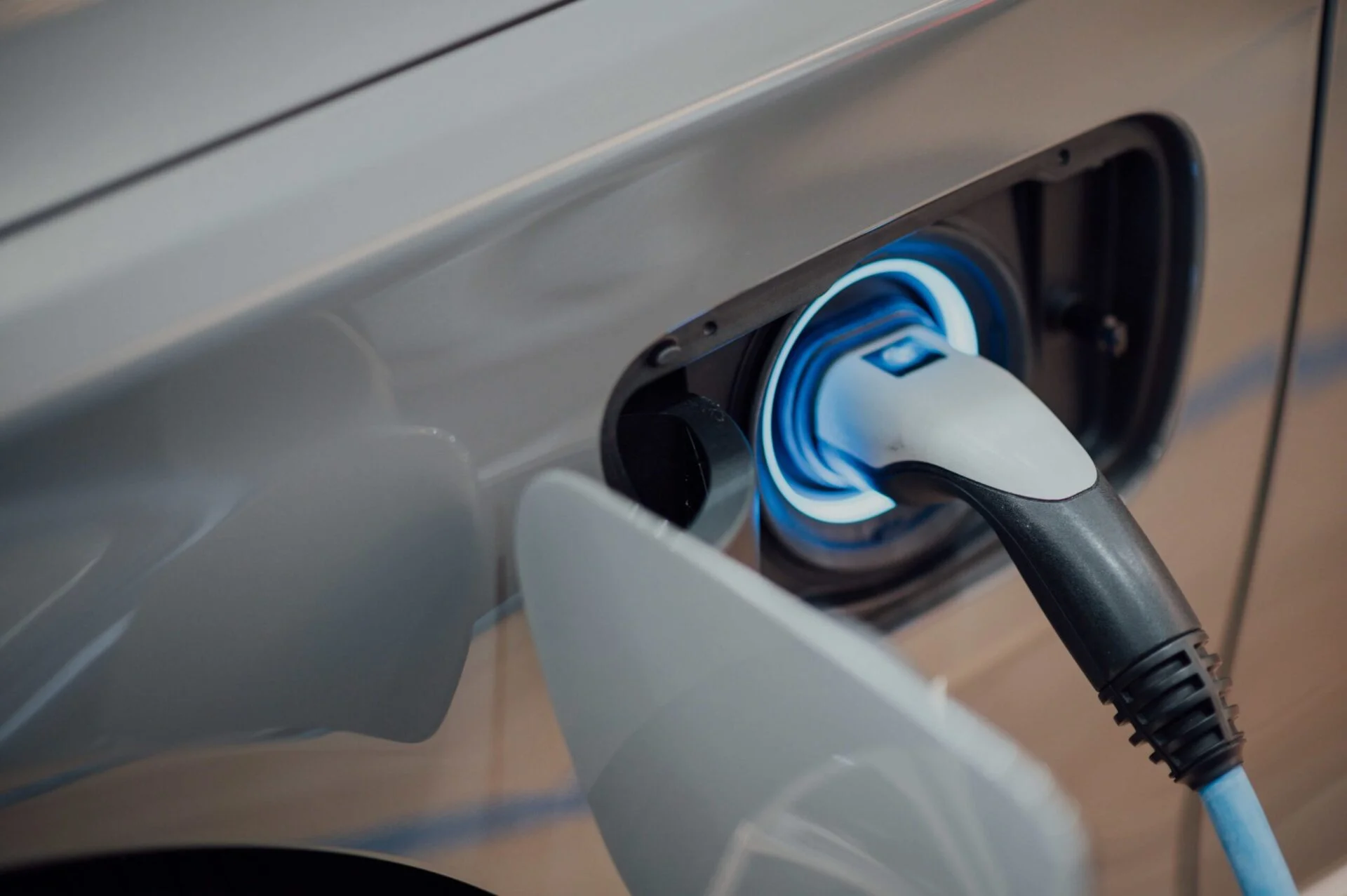
Understanding EV charging standards in the US and Europe
The past few decades have been game-changing for the global economy, nature, and humankind. Covid-related healthcare issues, ecological collapse, and the European energy crisis are a few examples of what we’ve been through.
Whatever innovations are capable of bringing people, and subsequently businesses, to a state of sustainable operations gain special attention of governments and provoke interest within the modern society. Development of e-mobility systems is one of such innovations, and their production is actively supported and at the same time strictly regulated by state institutions.
This creates obstacles for manufacturers and technology providers that take advantage of sustainability-related innovations. On the one hand, they become eligible to apply for state funding to promote their development, while on the other hand they have to stay compliant with ever-changing industry requirements.
In this article, we discuss electric mobility standards in the US and Europe. The central part of the story will be devoted to electric vehicle (EV) chargers as the key element of global EV infrastructure and smart vehicle adoption.
Overview of the EV charging industry
A 2024 Global EV Outlook report by the International Energy Agency (IEA) revealed that electric vehicles made up nearly 15 percent of global car sales in 2023 compared to 10 percent in 2021. Subsequently, the installation of publicly available EV chargers shows no signs of slowing. According to IEA, the number of globally available public EV chargers in 2021 was up by nearly 40 percent compared to 2015.
At the same time, McKinsey observes a charging capacity gap and predicts that total energy demand in EU countries and the US will reach 132 billion kilowatt-hours annually by 2030. By comparison, in 2020, demand in both regions combined was only 10 billion kilowatt-hours.
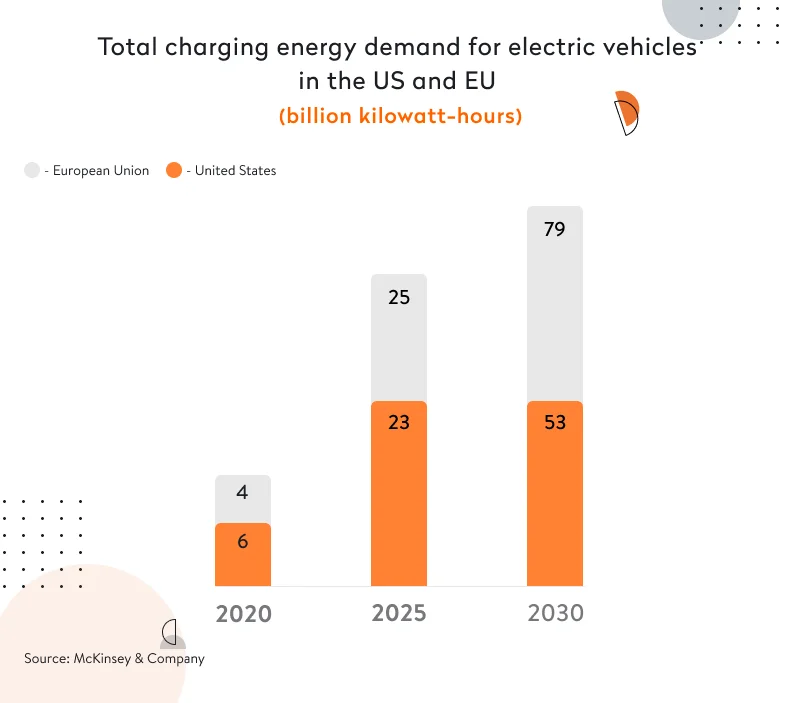
As we can see, on the one hand, the emerging EV industry creates demand for new EV charging infrastructure and offers a huge opportunity for investors. On the other hand, a high number of EVs connected to the charging infrastructure simultaneously can create an intense load on power grids and bring us back to the very energy consumption issue we’re trying to solve.
Why smart EV charging?
Smart charging has appeared as a way to optimize energy consumption by EV charging stations. Smart charging is a data-driven model of communication between an electric vehicle and a charging station that provides the parties involved with insights into the charging process and energy use.
Smart EV charging is aimed at creating an intelligent infrastructure that allows for promoting the green energy movement by leveraging electric vehicles and taking pressure off grid operators. In fact, smart charging makes it possible to run tens of millions of vehicles without crashing local energy networks.
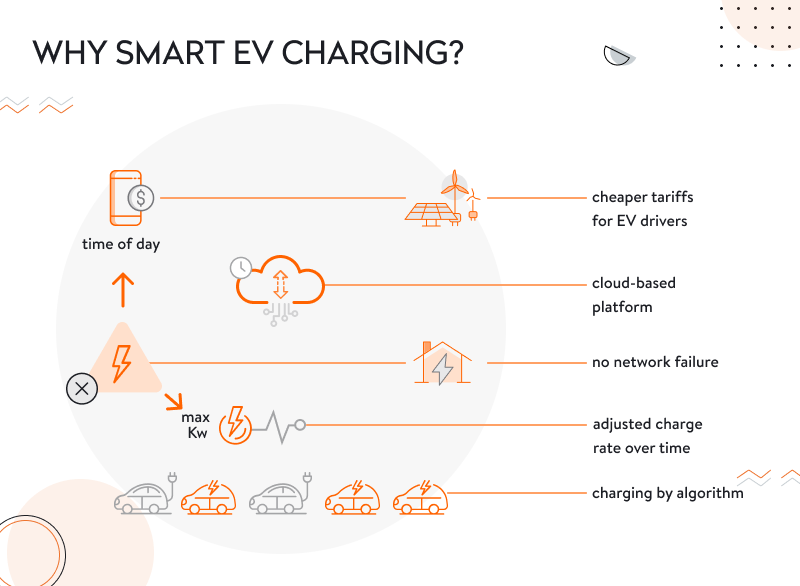
With smart charging, everybody wins by making smarter use of renewable energy:
- For EV drivers, smart charging is a way to save money by understanding when it’s the best time to plug in.
- For power grid operators, smart charging is a way to monitor changes in load on the electrical grid and prevent overloads.
- For governments, smart charging is a way to promote sustainability by optimizing energy consumption by local businesses and individuals.
Governments control the sustainability movement by issuing rules to control the parties involved in e-mobility infrastructure development. Following these EV charging rules becomes a must for charging manufacturers and a matter to reckon with for software developers.
Electric car charging standards in European countries and the US
Let’s overview the game-changing standards and EV smart charging regulations that define and accompany the adoption of smart charging across the US and European markets.
Europe
Europe is one of the global leaders in EV production and adoption. McKinsey estimates that the number of public EV charging stations in Europe is likely to quadruple in just a few years.

The adoption of smart EV charging in Europe is fueled by a number of initiatives introduced by the EU and aimed at reducing CO2 emissions from transportation in the coming years.
- The European Green Deal presented in December 2019 affirmed that EU Member States recognize the urgency of climate change and agree on the further transformation of the EU into “a resource-efficient economy.” In particular, this meant reducing greenhouse gas emissions and achieving economic growth without dependence on non-renewable resources.
- The result of the European Green Deal was the Fit for 55 package. This is a clear directive that calls for reducing Europe’s CO2 emissions by at least 55 percent by 2030.
- To help Europe achieve the desired result, in July 2021, the European Commission came up with the Alternative Fuels Infrastructure Regulation (AFIR). This was a direct response to the Green Deal, containing the legislative framework for public charging for the next decade. Under this regulation, all new publicly accessible charging stations in Europe will have to be digitally connected and capable of smart charging.
The whole smart charging concept and the need for creating a digitally connected EV infrastructure bring technology providers to complex solutions needed for developing distributed systems. As an IoT solutions provider, Yalantis is at the forefront, delivering robust, scalable systems that power the next wave of innovation in the EV charging ecosystem.
Read also: Rust for distributed system development and other technology use cases
United States
America’s EV adoption is happening in the context of a federal target to make half of all vehicles produced in the US electric by 2030. According to McKinsey, meeting the target would mean that America’s EV fleet would approach 48 million vehicles.
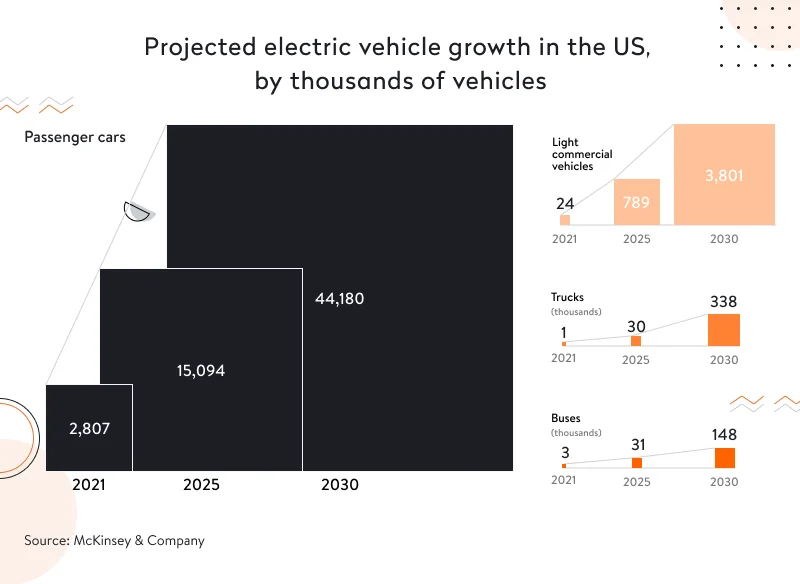
This aspiration to accelerate EV adoption is documented in the Bipartisan Infrastructure Law (BIL) and supported by the National Electric Vehicle Infrastructure (NEVI) Formula Program. They describe EV charging standards USA e-mobility providers need to implement and follow.
Namely, introducing these new standards presupposes rethinking the EV charging ecosystem by introducing the following initiatives:
- Developing the country’s EV charging infrastructure using the budget allocated by the federal government ($7.5 billion)
- Installing 500,000 public chargers compatible with all vehicles and technologies
- Making EV charging accessible by expanding charging infrastructure to low-income urban districts and rural areas
- Creating a cross-state network for communication between charging providers and ensuring interoperability by introducing a single payment system
- Making use of smart charging technologies by introducing similar technical requirements (speed, capacity, etc.)
Aiming to establish a unified flow, EV charging providers would be wise to make use of above initiatives. The US federal government, on the other hand, provides EV charging providers with an opportunity to take advantage of federal funding. That’s why technology providers are often interested in becoming FedRAMP certified.
The Federal Risk and Authorization Management Program (FedRAMP) was established by the US government and is aimed at achieving standardized approaches to security assessment, authorization, and continuous monitoring for cloud products and services.
Becoming FedRAMP certified means complying with a number of strict requirements related to integration with third-party providers and technologies that are counted as secure and progressive according to the US government. At the same time, FedRAMP provides service providers with unique opportunities to enter new markets and become leaders in them.
Volodymyr Dombrovskyi, Node.js Tech Lead at Yalantis
The demand for smart charging stations both in Europe and the US is only gaining momentum, creating opportunities for startups and establishing new rules for market giants.
Globally adopted EV charging standards to comply with
In response to government regulations, a set of technical requirements have emerged at the engineering level. On the whole, these EV charging protocols and standards are met by e-mobility developers globally.
- OpenADR (Open Automated Demand Response) is a fundamental smart charging standard that is responsible for managing and balancing a system’s energy during periods of peak demand. OpenADR defines a specific set of actions to be taken in cases when electric grid contingencies threaten the supply–demand balance and the load needs to be reduced. In technical terms, OpenADR 2.0 facilitates automation and standardization of demand response (DR) and distributed energy resources (DER). Apart from managing growing energy demand, the standard allows for decentralized energy production and allows customers to control future energy consumption.
- OCPP (Open Charge Point Protocol) is a protocol that defines communication between EV charging stations and a central management system. OCPP is a standard developed for the e-mobility market by the Open Charge Alliance. Its key objective is to ensure infrastructure interoperability, thus optimizing operating costs and protecting the system from the most common attacks such as server hijacking, communications eavesdropping, and charging station impersonation. The latest protocol version, OCPP 2.0.1, includes improvements related to protocol security, ISO 15118, and smart charging.
- OCPI (Open Charge Point Interface) manages communication between charging station operators and e-mobility providers. OCPI is a protocol that enables roaming automation for EV drivers and ensures their smooth communication with EV charging networks. Simply put, this EV charging standard allows drivers to charge their EVs at different networks without the need to use a mobile app of any specific EV network provider. With OCPI, a driver receives access to charging stations and their data, including station locations, accessibility pricing, and real-time billing.
- OSCP (Open Smart Charging Protocol) is an EV charging protocol that allows for building real-time predictions of local electrical grid capacity and communicating them to the charge point operator. Using this protocol, service providers receive a forecast of electric grid charging capacity and generate EV charging profiles based on it. This allows grid operators to optimize use of available charging capacity.
- OCHP (Open Clearing House Protocol) enables a simple method of communication between a charging management system and a clearing house system. Using this protocol, a clearing house provides access to its network for EV charging providers connected to it.
- OICP (Open InterCharge Protocol) is another EV charging standard that defines communication between an e-mobility service provider (EMSP) and charge point operators (CPOs) on Hubject, the world’s largest international e-roaming network. Its aim is to provide reliable roaming options to EV drivers based on contractual relationships between the parties in question.
- ISO 15118 is a universal electric car charger standard for digital communications between electric vehicles and charging stations. It’s based on vehicle-to-grid (V2G) technology and in fact defines a communication interface for power connectivity between the vehicle and the grid.
All of the protocols mentioned above are aimed at helping the parties involved in the charging process optimize the charging experience by following guidelines and open standards applicable to the development and distribution of e-mobility services.
Territory-specific EV charging regulations
In general, all electric vehicle charging industry requirements that exist globally are aimed at simplifying the process of charging for drivers as well as making smart use of energy. However, there are still differences in charging standards and regulations across localities.
- In the US, California accounts for almost 39 percent of the country’s EV fleet. Considered the greenest and most progressive state, California follows a set of requirements related to EV infrastructure development and deployment. These include Electric Vehicle (EV) Charging Station Policies for Multi-Unit Dwellings, Electric Vehicle Charging Station Signage Authorization on Highways, Electric Vehicle Charging Station Policies for Residential and Commercial Renters, and the CALGreen Building Code.

- In the UK, EV charging infrastructure deployment as well as EV adoption are defined by the Smart Charge Points Regulations. Complying with the regulations means that each new standard EV charger sold in the UK for home or workplace use must come with a set of smart functionality and meet a specific set of requirements related to connectivity, privacy, off-peak charging, and phased charging times. Among the electric vehicle charging regulations the UK government has adopted is a requirement for chargers to be able to delay charging by up to 1800 seconds to prevent overloading of the electrical grid.
- In the Netherlands, a number of specific EV charging regulations have been adopted. The country has the highest density of electric vehicles and chargers per 100 km in Europe. Dutch EV incentives include subsidy schemes that encourage companies and individuals to adopt EVs in exchange for various tax subsidies. Such incentives have taken the green energy movement in the county to the next level and made local authorities regulate EV charging infrastructure deployment by introducing a demand-driven approach. This means all chargers should be placed according to existing demand, and their relevance should be validated by a charge point operator.
- In many European countries including Greece, all EV charging stations need to offer e-invoicing capabilities. That means after a driver charges their EV, an invoice should be transmitted to the Interoperability Center and processed on the side of the General Accounting Office (GAO). A respective directive was issued by the Greek General Secretariat for Information Systems of Public Administration and aims to establish a standardized process of handling e-invoices for expense approval, processing, and payment.
These and other EV charging regulations influence the way charging providers and infrastructure developers deliver technical solutions and should be treated seriously by e-mobility providers seeking to expand their impact globally.
How EV charger standards impact charging manufacturers and software providers
EV regulations that governments, including local authorities, keep rolling out are aimed at rethinking the charging experience by pursuing these principal ideas:
- making EV charging accessible
- optimizing the energy efficiency of EV charging stations
- providing a transparent EV charging experience
- providing additional conditions for stimulating fast and effective EV adoption
Following these principles is obligatory both for EV charging manufacturers and software providers. While for charger manufacturers, this means creating charging stations that are compliant with the most recent industry standards, software providers need to master cutting-edge technologies and find smart architectural solutions to meet the functional and technical requirements.
Read also: Guide to edge computing for IoT development
How to comply with charging standards in software development
Let’s figure out what it takes to build a compliant EV charging architecture based on the example of a territory-specific industry standard we mentioned before: e-invoicing.
Suppose an e-mobility provider aims to expand their geographical coverage to Greece. In that case, they need to be sure that the back end allows for generating, sending, and approving invoices, then sending them to the EV driver. Additionally, adding such functionality should not affect the system’s performance indicators, such as transaction speed and throughput.
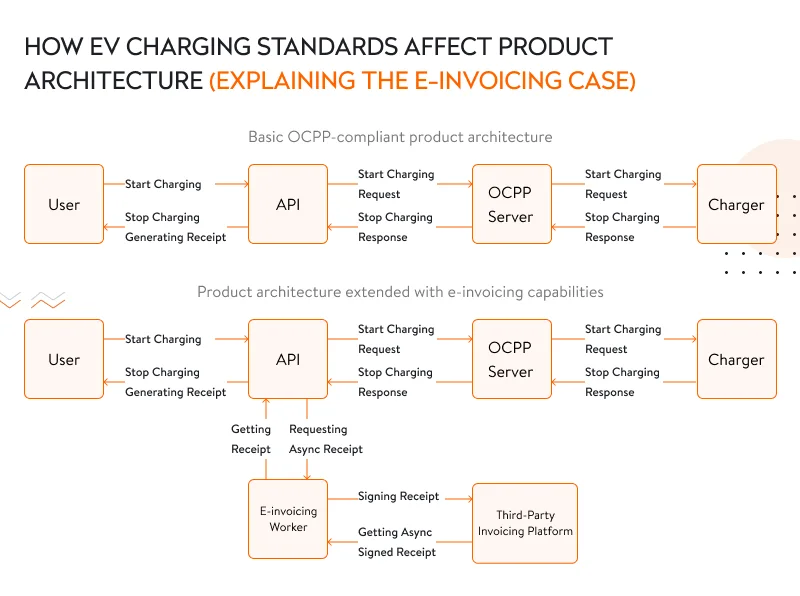
Adding e-invoicing capabilities is usually done by establishing an integration with a dedicated third-party service (for example, Epsilon Net). While all functional components of the implementation come as an API, the integration creates a serious bottleneck, which is synchronous data processing.
To ensure that an invoice will still be generated, processed, and returned to the user if the connection drops or the system experiences a peak load, the integration also requires a couple of add-ons. One way to solve this issue from the technical point of view is by distributing the system load by adding asynchronous streams and moving part of the operations to queues, as shown in the image above. While achieving compliance, it’s crucial to also focus on the cybersecurity aspect. Implementing IoT cybersecurity security solutions is essential to ensuring the safety of charging stations and user data against malicious threats.
Although each implementation is unique and meeting any specific requirement should involve thorough business analysis before development starts, partnering with a reliable service provider is a way to strengthen your in-house teams.
With Yalantis, you can create complex distributed systems and achieve compliance in domains from healthcare to IoT. Our experts have experience working with enterprises and globally recognized companies, but we are also proud of bringing technology startups to the next level.
FAQ
Which markets have the most electric vehicles?
Although China is still a global leader in EV adoption, Europe and the United States are considered to be the runner-ups considering that EV sales in these two regions have grown by 85 percent since 2015. California is the most EV progressive state, while in Europe, the e-mobility leaders are the UK, Germany, the Netherlands, and Norway.
What EV charging standards have been adopted globally?
There are globally adopted EV charging regulations, laws, rules, and protocols that apply to e-mobility development including OCPP, OCSP, OCPI, OpenADR, ISO 15118, and others.
What is smart EV charging?
Smart EV charging is a specific charging system composition in which the owner of the charging infrastructure can remotely monitor, manage, and restrict the use of charging stations. This allows for optimizing energy consumption and decreasing the load on power grids as well as optimizing what EV drivers spend on charging their vehicles.
Rate this article
5/5.0
based on 2,200 reviews




